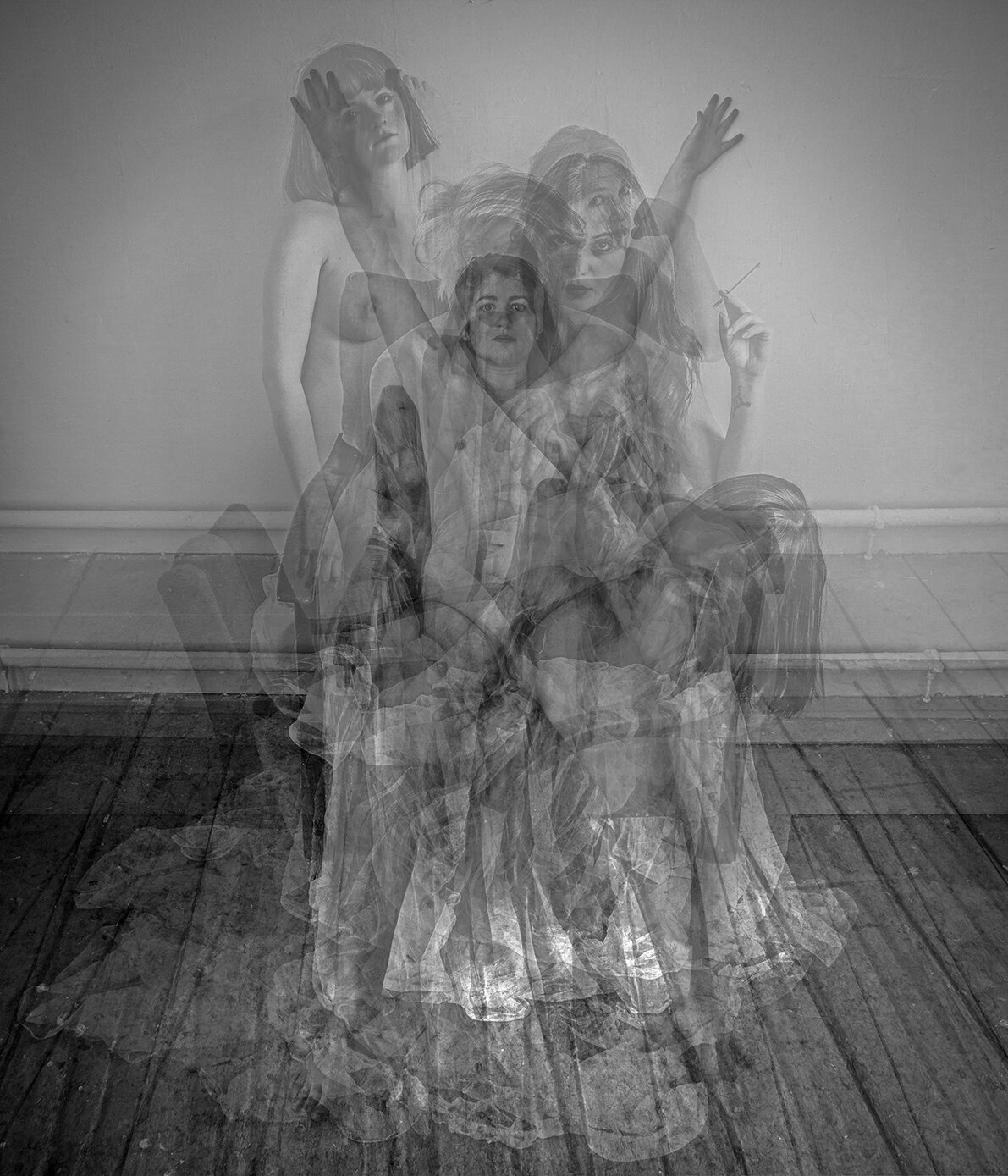REVIEWS
"She Was So Beautiful, Like She Was Her Own Creator, documents Jurisic’s attempt to trace the story of her aunt Gordana Cavic, a glamorous figure who left rural Yugoslavia in the 1950s and whose subsequent experiences involving false identities and espionage remain mysterious. Jurisic presents her careful, fruitful research in a series of illustrated notebooks that recall WG Sebald’s approach to memoir, history and reflection." (5* review of My Own Exhibition in The Irish Times by Aidan Dunne)
"Dragana Jurisic’s My Own Unknown at the Oliver Sears Gallery, is a complex investigation of female identity, framed against the search for more information about the life of her glamorous and mysterious aunt. Jurisic makes effective use of several different formats, including an installation of books and several light-boxes, where she seems to be metaphorically replaying her aunt’s journey away from her repressive homeland using self-portraiture in a way that evokes the slipperiness of those identities. This multi-part project is a nice development for Jurisic and grows more gratifyingly elaborate with each showing." (Darren Campion)
"My Own Unknown, the latest body of work by Dublin-based photographer Dragana Jurišić, an on-going series comprising five fascinating chapters due to culminate into a fictionalised biography. Combining text and photography, appropriated imagery also intermingles ruthlessly with notebook texts, video and performance, across diverse creative processes and narrated through differing voices. Hybrid and complex, My Own Unknown defies classification – its overlapping of languages, registers and motifs reflect the eclectic and expansive aesthetic and intellectual world of its author, Dragana Jurišić." (Natasha Christia for 1000 Words Magazine)
MY OWN UNKNOWN (2014 - )
Chapter 1: "SHE WAS SO BEAUTIFUL, LIKE SHE WAS HER OWN CREATOR!"
"She was so beautiful, like she was her own creator" chapter delves into the story of the disappearance of my aunt Gordana Čavić from rural Yugoslavia in the 1950s, and her subsequent death in Paris in the 1980s. A life shrouded in mystery, it involves tales of multiple identities, illicit sex and espionage.
Chapter 2: L'INCONNUE DE LA SEINE
With this chapter I aim to explore the statement once uttered by John Keats, ‘beauty is truth, truth beauty - that is all ye know on earth, and all ye need to know’. My initial questioning of this statement took me to Paris to commence an exploration on L’Inconnue de la Seine, the name given to a young woman whose body was allegedly recovered from the River Seine and whose death mask was cast in a bid to identify her. Her serene and quiet beauty became a muse for artists such as Man Ray, Albert Camus, Anais Nin and many others, who projected imagined identities on this drowned Mona Lisa. Her image talks about a profound relationship between beauty and artistic endeavour, between ‘worshiping the image’ and the notion of truth.
l'Inconnue de la Seine
Chapter 3: 100 MUSES
The idea of the muse often evokes images of a male artist and a passive female muse. The female muse is often depicted as nude in visual art. And in turn “the nude” – one of the biggest clichés of Western art tradition, is a genre predominantly inhabited by male artists. At the beginning of April 2015, I began the task of photographing 100 female nudes over a period of five weeks in order to explore what happens when a female artist looks at female body. What are the characteristics of the female gaze? What happens once 100 women respond to the open call of being photographed nude? Once in the artist’s studio, they are given two props: a chair and a veil. How do they utilise these props? To show, or to hide their bodies?
Women in these photographs directed themselves. They also chose the image that would represent them.
Chapter 4: MNEMOSYNE'S DAUGHTERS
Mnemosyne the goddess of memory, was the daughter of Gaia’s (the great mother of all), and the mother to the nine Muses: Calliope, Clio, Euterpe, Erato, Melpomene, Polyhymnia, Terpsichore, Thalia and Urania.
The image of 'The Mother' is the overlap of all.





















